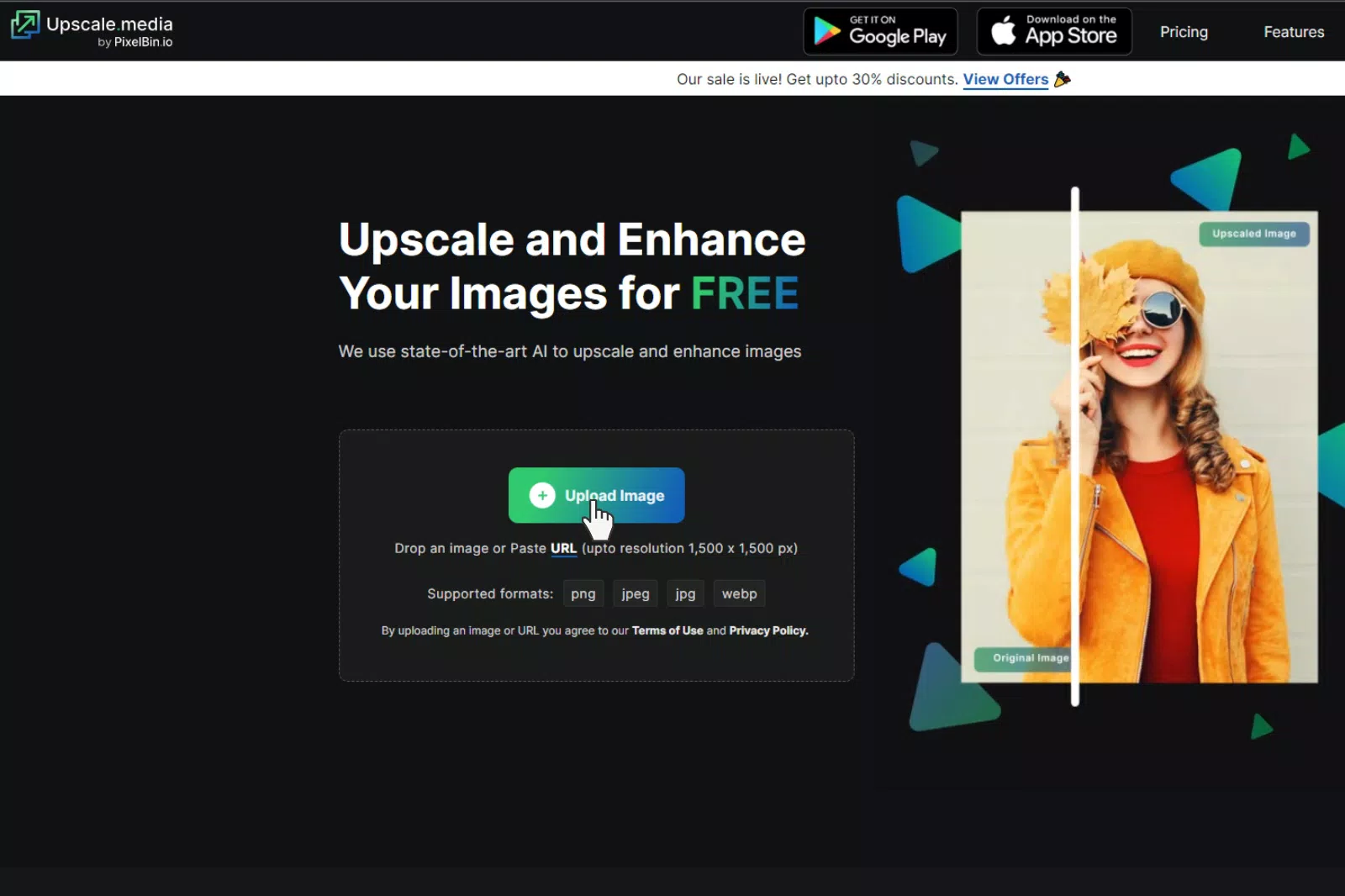Use AI to Upscale Video

As technology continues to advance, the demand for high-quality video content is on the rise. However, not all videos are created equal, and sometimes we find ourselves with low-resolution footage that just doesn’t cut it. This is where upscaling video comes in – a process that increases the resolution of a video to make it look sharper and clearer. While traditional upscaling methods have been around for some time, recent advancements in artificial intelligence (AI) have made it possible to upscale video with unprecedented accuracy and speed. In this article, we’ll explore how AI can be used to upscale video, its benefits and limitations, and how it works. So let’s dive in!
What is Upscaling Video?
Have you ever watched a video that was blurry or pixelated? It can be frustrating to try and make out what’s happening on the screen. This is where upscaling video comes in.
Upscaling video is the process of taking a low-resolution video and increasing its resolution to improve its overall quality. This can be done manually, but it can be time-consuming and often doesn’t produce the desired results. With advancements in technology, artificial intelligence (AI) has become a popular tool for upscaling video.
By using AI algorithms, upscaling video becomes more efficient and effective. AI can analyze the pixels in each frame of a low-resolution video and predict what they should look like at a higher resolution. The result is a smoother, clearer image that is easier to watch and understand.
How can AI Help with Upscaling Video?
When it comes to upscaling video, AI has proven to be a game-changer. With the help of machine learning algorithms, AI can analyze and enhance low-resolution videos to produce high-quality results that are comparable to those shot in higher resolutions. This is achieved by using complex mathematical models that can predict missing pixels and fill them in with accurate information.
One of the main advantages of using AI for upscaling video is its ability to learn from vast amounts of data. By training on large datasets, AI can identify patterns and features that are not visible to the human eye, allowing it to generate more realistic images. Additionally, AI-powered upscaling techniques can be applied in real-time, making it possible to upscale videos on-the-fly without any noticeable lag or delay.
Overall, AI has revolutionized the way we upscale video content. Its ability to learn from data and generate high-quality results has made it an indispensable tool for content creators who want to improve the quality of their videos without having to invest in expensive equipment or software.
What are the Benefits of Upscaling Video with AI?
Upscaling video with AI has numerous benefits that can enhance the overall viewing experience. One of the most significant advantages is the ability to improve the quality of low-resolution videos. With AI-powered upscaling, even old and grainy footage can be transformed into high-definition content, making it more enjoyable to watch.
Another benefit of using AI for upscaling video is that it can save time and resources. Traditional methods of upscaling require manual intervention and can take hours or even days to complete. However, with AI algorithms, the process is automated and much faster, allowing for quicker turnaround times without compromising on quality.
AI upscaling also allows for greater flexibility in terms of screen size and resolution. As screens become larger and resolutions become higher, traditional upscaling methods may not be sufficient to maintain image quality. However, with AI-powered upscaling, images can be upscaled to fit any screen size or resolution without losing clarity or detail.
Overall, using AI for upscaling video provides a cost-effective solution that enhances the viewing experience while saving time and resources. It’s no wonder that more and more companies are adopting this technology as a standard practice in their video production processes.
How does AI Upscale Video?
AI upscaling video is a complex process that involves the use of deep learning algorithms to enhance the quality of low-resolution videos. The AI system analyzes the pixels in each frame of the video and uses machine learning techniques to predict what the missing pixels should look like. This prediction is based on patterns learned from high-resolution images, which are used as training data for the AI model.
Once the AI system has predicted what the missing pixels should look like, it generates new pixels to fill in those gaps. This process is repeated for every frame in the video, resulting in a higher resolution output that looks sharper and more detailed than the original footage.
The use of AI upscaling technology has revolutionized video production by allowing content creators to improve old or low-quality footage without having to reshoot it entirely. With this technology, even old movies and TV shows can be remastered and re-released in high definition formats, giving audiences a better viewing experience than ever before.
What are the Limitations of AI Upscaling Video?
While AI upscaling has revolutionized the video industry, it still has its limitations. One of the biggest limitations is that AI can only do so much with the information it is given. If the original video quality is too poor, even the most advanced AI algorithms will not be able to produce a high-quality output.
Another limitation is that AI upscaling can sometimes introduce artifacts or distortions into the final product. This is especially true when upscaling from low-resolution videos to higher resolutions. While these issues are often minor and barely noticeable, they can still detract from the overall viewing experience.
Finally, there is also a cost associated with using AI upscaling technology. The hardware and software required to run these algorithms can be expensive, making it difficult for smaller companies or individuals to take advantage of this technology.
Despite these limitations, AI upscaling remains an incredibly powerful tool for improving video quality. As technology continues to advance, we can expect these limitations to become less significant over time.
Conclusion
In conclusion, AI has revolutionized the way we upscale video. With its advanced algorithms and machine learning capabilities, it can enhance the quality of low-resolution videos to a level that was once impossible. The benefits of using AI for upscaling video are numerous, including improved visual quality, reduced noise and artifacts, and increased detail. However, there are still limitations to what AI can achieve in terms of video upscaling. Despite this, the future looks bright for AI-powered video upscaling technology as it continues to evolve and improve with each passing year. As such, we can expect even more impressive results in the years to come.






